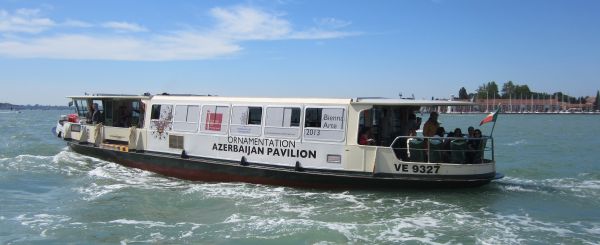
Despite the fact that “Biennale” literally means bi-annual (that is, every two years), this extravaganza of art has been broken up into so many different pieces — architecture, dance, music, etc. — that it has become, in some form or other, an annual event. Which means that at the beginning of June every year we live a week or so of intense spectatorhood at the swarming of the international art-scenesters.
For the brief period leading up to the inauguration (June 1 this year), we are entertained by an extraordinary spectacle of garb and behavior — I don’t mean this as a compliment — and the neighborhood businesses, especially bars and restaurants, get to earn some real money. If the visitors were the proverbial hay, the Biennale would be the proverbial sun, and the local merchants would be scything around the clock.
Short as this interlude may be, it causes all sorts of disorderly thoughts to rush into my brain — thoughts about art, thoughts about what it’s for and how it works, why or whether it matters, and thoughts about people (those are usually nasty, brutish and short — the thoughts, I mean, not the people).
I spent most of yesterday attempting to write them down and organize them so I could share their brilliance with you. But I gave up. Based on the art we see outside here, and the people who pursue it, art has become something so silly that to treat it as something serious has become an art form in itself.
The neighborhood is pulsating with journalists, art-watchers, art-commenters, and art-participaters. And I suppose also some lower-voltage art-perpetrators too, but I doubt that they are wandering around via Garibaldi, or blocking the streets drinking their spritzes where the space is narrowest (“You need to get through here? How quaint”), or leaning against things talking into their phones, drawing attention to themselves. My experience is that real artists rarely look all that important. Irving Penn looked like a vinyl-siding salesman.

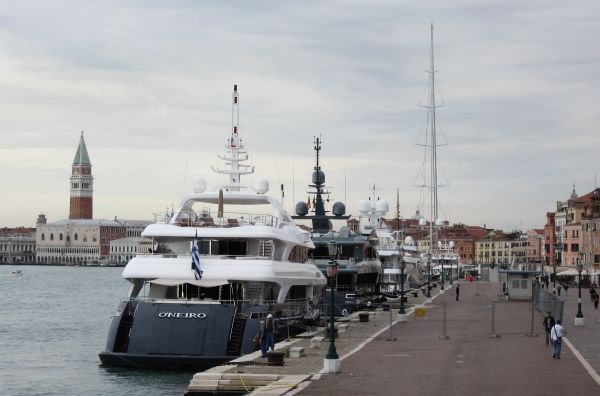
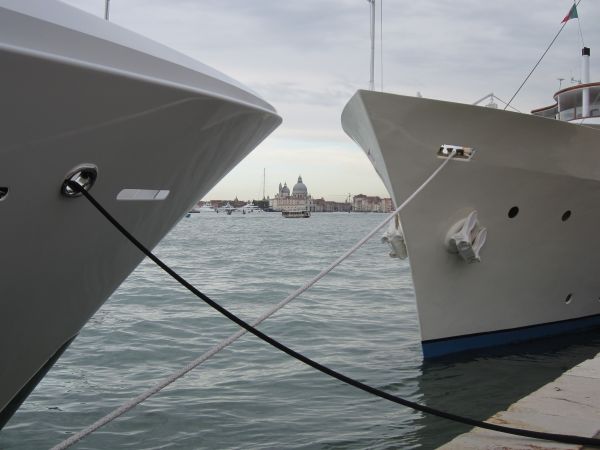
Every year there is one major work of art that takes center stage, or tries to. They are always put out along the fondamente, obviously, where they can’t not be seen.
The first year I was here, it was a monstrous concrete hand, half-emerging from the pavement, fingers reaching upward in what might have been a metaphoric expression of yearning — or pleading, or grasping — for freedom. Another year it was a five-story-high sort of stele, glowing night and day with a violently-blue neon sort of waterfall. That blighted the landscape for quite a while. Then there was the decrepit traditional wooden sailing boat from the Comoro Islands, encumbered with two ponderous dumpsters, that floated for months tied to some pilings as it slowly came apart. Oh — and there was the tree, planted on a specially-constructed platform, in front of the Giardini where there are masses of trees.
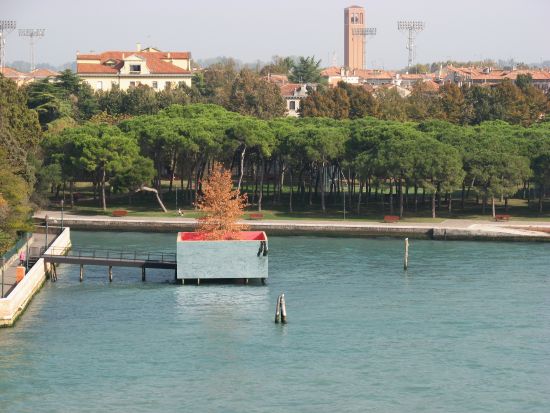
This year it is a gigantic figure on the island of San Giorgio sometimes known as “Alison Lapper Pregnant,” but at the moment called “Respiro” (“breath”). It is a portrait of English artist Alison Lapper, who was born as shown here (except obviously not 11 meters/33 feet high, purple, and inflatable). Don’t try to understand this by yourself; only Marc Quinn, the artist, and his assorted interpreters can tell you what it really means.
It’s actually very simple. I translate from a photo caption in Panorama.it: This handiwork “proposes a new model of feminine heroism in which love, maternity and vitality reach an unpredictable form and an unexpected peak.” It also is part of a “voyage from the origins of life” and “celebrates fear and wonder in the face of the world in which we live.” Other resonant phrases such as “the beauty and mystery of creation and life” defeat my capacity to link language to thought.
In case you might suppose that this artifact were some self-indulgent creation meant only to stupefy the Biennalists, or that the Palladian monument of the church of San Giorgio might be an inappropriate location for showing it (Peasant!), you should know that it has been exhibited at all sorts of places. It’s been in London since 2005 and was understandably given pride of place at the Special Olympics in London in 2012; other sites range from places associated with some sort of violence, such as a military training field in Tripoli, Libya; in Paris (protests against gay marriage); in Srinagar (protests in Kashmir); in Moore, Oklahoma (tornado tragedy), to more frivolous events which needed to draw more than usual attention to themselves, such as the competition in Berlin of “German models of the future,” to the beach at Long Branch, New Jersey, to Indianapolis, Indiana. She’s traveled more than I have.
With the deepest respect to the subject of this creation (I can’t call it a statue, but I can’t call it a balloon, either), the thoughts it inspires are not related to life, beauty, mystery, fear or wonder. Because I already know what it is. Like everything else on earth, it is a business. Or rather, part of a business. Mining mercury, molding ocarinas, feeding orphans, shoeing horses — all businesses.
Business is one of the fundamental building blocks of life, right in there with carbon, nitrogen, oxygen, hydrogen, phosphorus and sulfur. And here at the Biennale we see the business of art, which — say what you will — has very little to do with life, beauty, mystery, or wonder, though maybe fear could be seen as playing a part.
Back to Alison Lapper as depicted by her plastic portraitist. I’m all for symbolism, but I am repelled by fabricated symbolism that is tacked onto an invention which is essentially intended to promote the inventor. Artists promote themselves because they want to sell you their stuff. Although Ms. Lapper collaborated in this work for her own reasons, she is merely the vehicle by which Marc Quinn intends to make you notice him. If all he wanted to do was show the beauty and wonder of life, he wouldn’t have put his name on it.
I’m not going to say any more, because this is the point at which my thoughts diverge from my ability to express them.
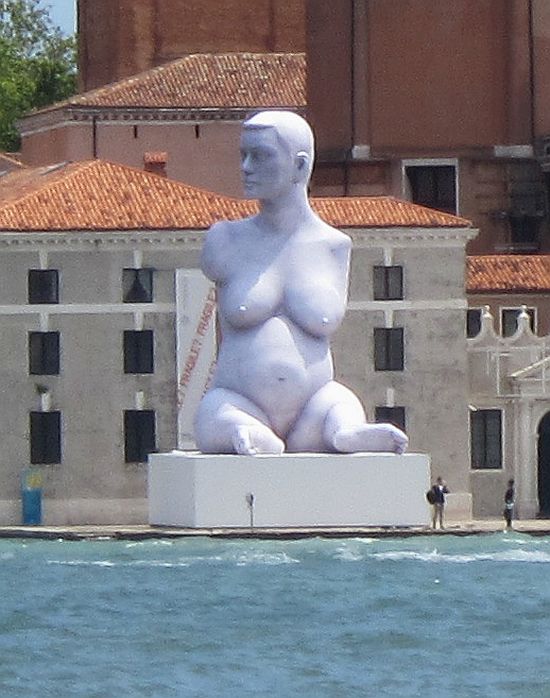
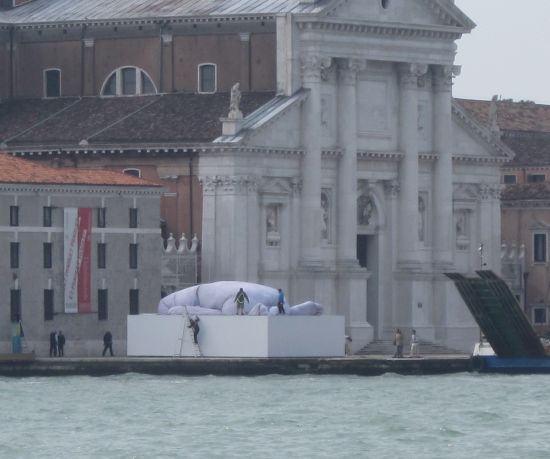
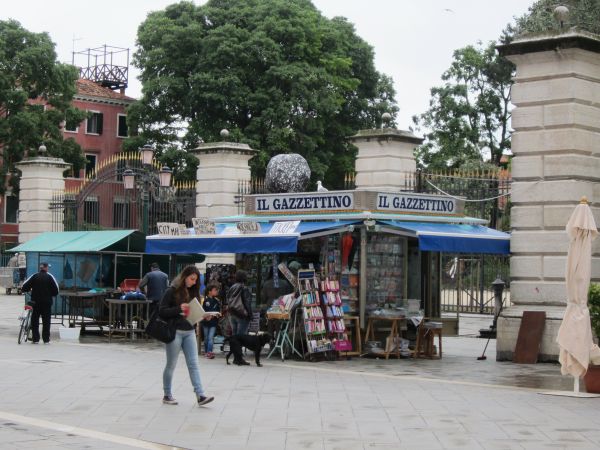

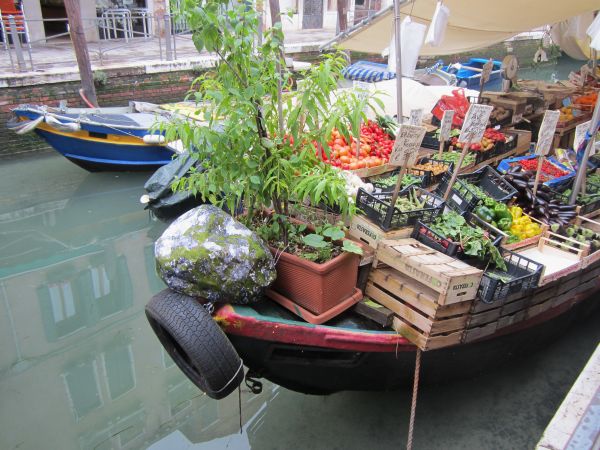
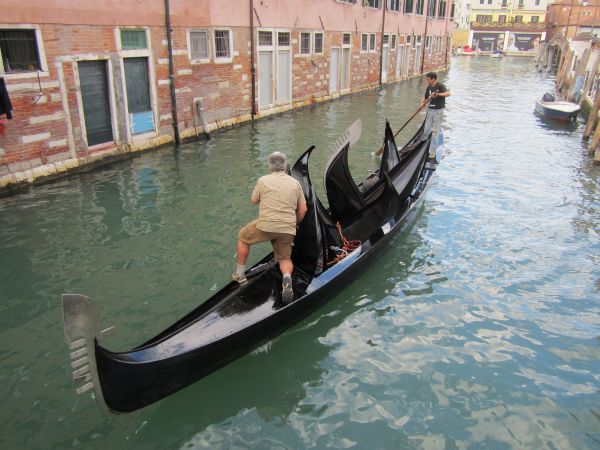
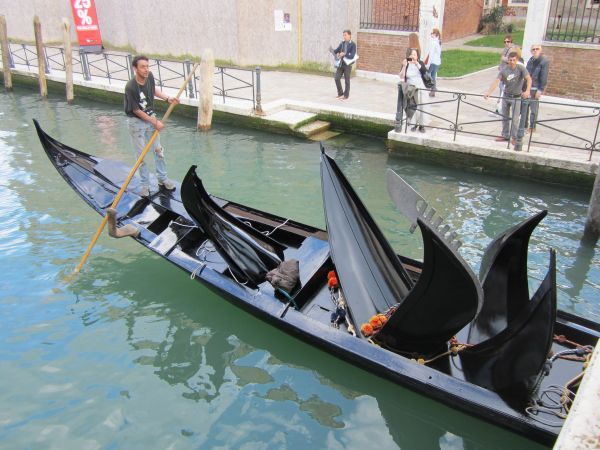
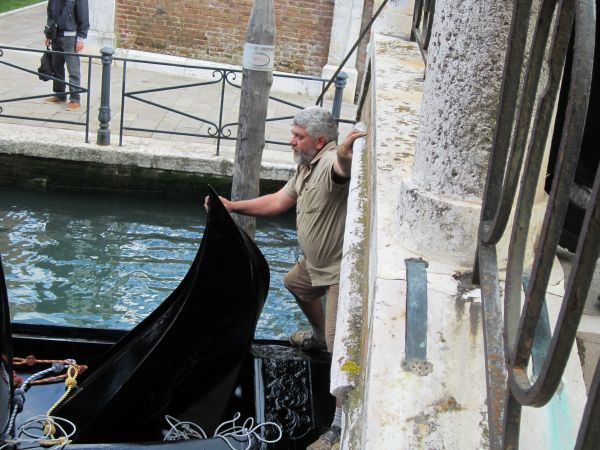
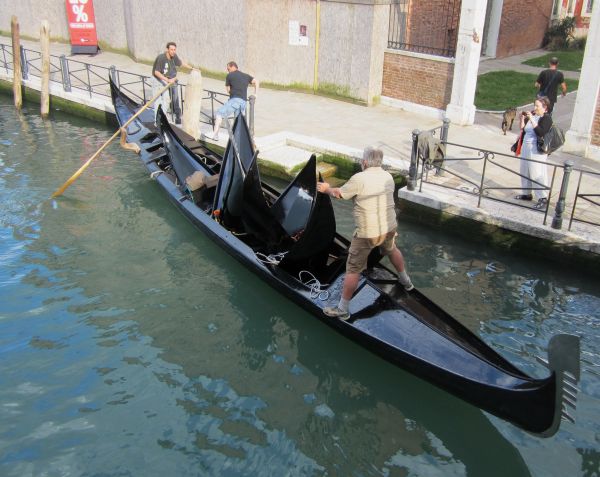
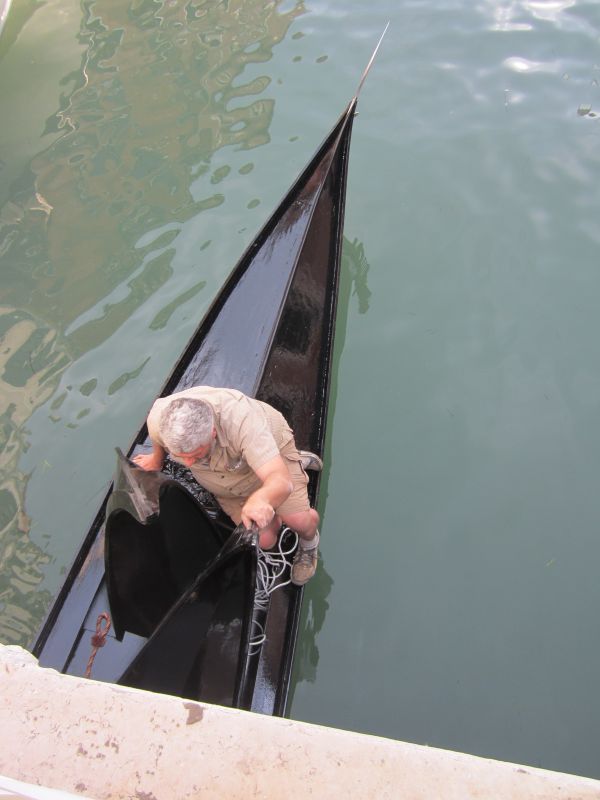
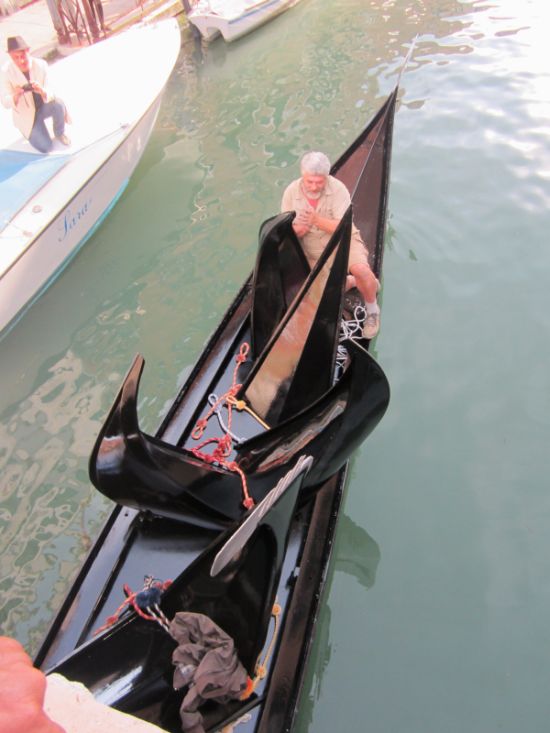
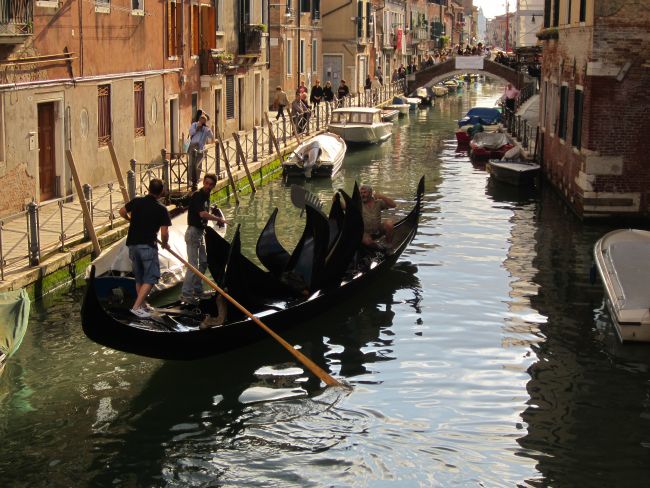
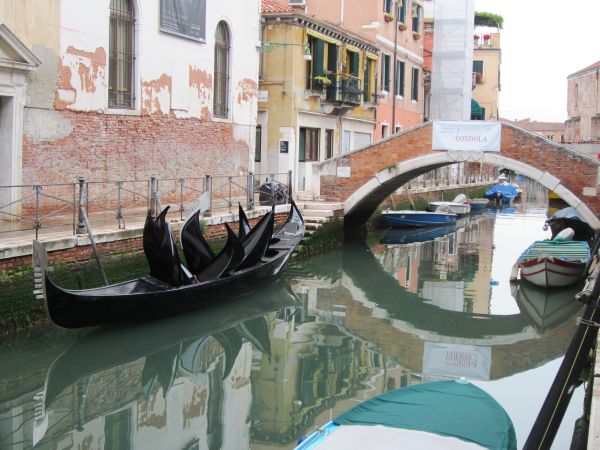
I will help you understand what this boat full of what looks like mussel-shells actually means: Study the explanation given here, take two aspirin, or a large grappa, or stick your finger in a live socket, and call me in the morning. It’s all art. All of it. Everything. Even your dirty-laundry basket and your old broken bike. You’re wasting your time doing whatever you do — you could be here in Venice, making people admire you.
Speaking of which, there is a wonderful scene in an extremely wonderful movie called “Le Vacanze Intelligenti” (The Intelligent Vacation) with Alberto Sordi. He and his wife are a late-middle-aged couple, fruit-and-vegetable sellers in Rome, whose highly educated children organize their summer holiday for them. No going to the beach this year — the parents are going to learn something! So the itinerary sends them to tour Etruscan tombs, and go to avant-garde concerts in Florence, and they finally end up in Venice, at the Biennale.
It’s summer, it’s sweltering, they’re exhausted, and while he goes off in search of a cold drink for her, she slumps, comatose, eyes shut, into the only available chair, under a tree. And people stop to admire her, and talk about what the artist had in mind, and how skillful he was, and how much she might cost if somebody wanted to buy her. The moment she comes to and realizes she’s been seriously mistaken for art is something sublime.

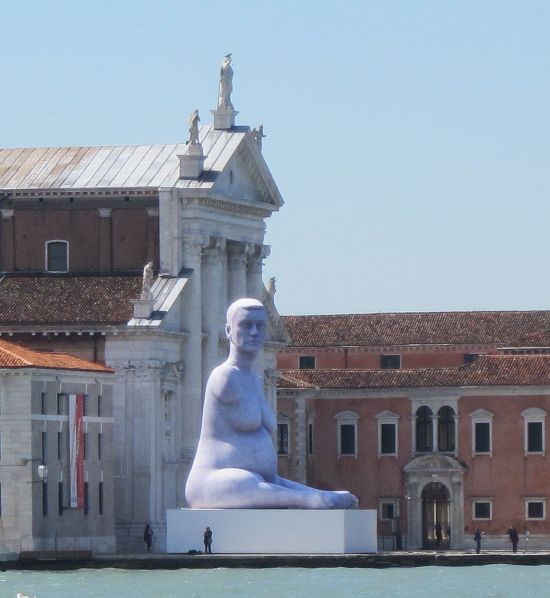
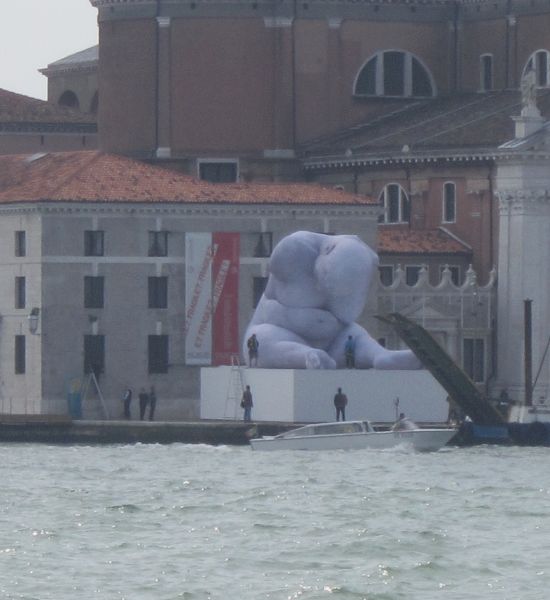
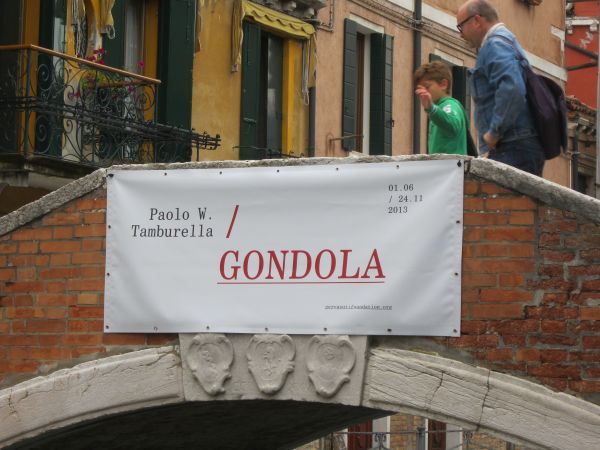
15 Comments
Number me among the peasants.
When in doubt over whether something is art or not, try this criterion that my husband and I employ: Can you eat it? No? It must be art. (The giant block of ice/art installation thing on Ca’ di Dio not withstanding. Please don’t confuse me further.)
As for the balloon in front of San Giorgio, I detested it less after reading this article about Alison Lapper: http://www.guardian.co.uk/artanddesign/2005/sep/03/art1 I still think the placement is a blight on the landscape, though. But I suppose that goes along with being a peasant.
I appreciate all this. I like your definition, but I think a battalion of celebrity chefs are going to punish you for categorically banishing their handiwork from the realm of art. But it’s almost impossible to find a place to draw the line between things anymore. I was talking with a young Australian woman who said she was vegetarian, and I asked her how she defined “vegetarian,” and she said she didn’t eat anything that had children. Which immediately led us into a big debate over whether clams could be said to have children. And so it goes…..
Mr. Penn, a Penn vinyl-siding salesman! Really, Ms. Z ???
But when it comes to taking on art-speak, you still got the chops. Wonderful piece; great snaps.
I remember vividly the only time I ever saw him, which was in our very own office on Fifth Avenue, and I have never forgotten how very small and quiet and unprepossessing he was. I might have done him an injustice; perhaps vinyl-siding salesmen have to be louder and more aggressive than he. Would you settle for “cultivator of bonsai evergreens”? “Supervisor of Carthusian novices”? Thanks for the nod for the snaps.
I wasn’t offended by the attribution, although his adoring staff might think otherwise. He was such a proper and reserved gentlemen that associating him with vinyl I thought was hilarious. But from the stories I’ve heard about being an assistant in his studio, “supervisor of Carthusian novices” is pretty good too.
Wonderful piece! As a peasant, I can’t comment on the art, but I’m reminded of the time that my goddaughter, who said she was vegetarian, loaded her plate with shrimp and chicken. When I asked her how she defined “vegetarian,” she said she didn’t eat anything that was “cute.” But baby chicks are cute, I countered. “Chickens aren’t,” she told me. So that would probably take care of clams too. I guess “cute” is in the eye of the beholder, like art.
Erla, we all have different interests. Personally, contemporary art is my main interest and the last few days have been for me the most exciting since we moved to Venice 15 months ago. It’s also been nice to see people we know from England & Scotland who are here for the Biennale – and they are all perfectly normal people who wear perfectly normal clothes and behave perfectly normally. I’m even a great admirer of Marc Quinn and his various versions of ‘Alison Lapper Pregnant’ (the one in Venice is new – the Trafalgar Square original was in white marble). But like I say, we all have different interests – I can’t see the attraction of rowing, but don’t mock those who do.
I take your points, but I would hazard that you see the people you expect to see, who are like you, and don’t pay any attention to the rest of the mob. I’m glad you’re pleased with the Biennale. The comparison to rowing isn’t very helpful, though, in that it doesn’t reflect personal taste or style in the way that works of art do. I’d like to think that you are sufficiently objective to recognize a piece of contemporary art that you don’t like. Or do you like them all, no matter what, as long as they’re contemporary?
Of course I don’t like all contemporary art – just as I don’t like all 16th century art, or all 19th century English literature. But I believe in keeping an open mind and giving everything a chance to engage me; more often than not I find something of interest, and sometimes I learn something.
There is a great deal of contemporary art that I like very much indeed. I usually keep an open mind until the artist closes it for me.
Thank you for sharing the experience you can’t escape from, I’ve often wondered what the Biennale was like. You are a refreshing turn of the page from the usual rave reviews about the Biennale. I find a lot (not all) of contemporary art to be a mockery of the viewer, it’s the “Emperor’s New Clothes” tale that the business of art would like us all to be lost in. More people are willing to feel safe within a scene, rather than listen to the honesty of feeling that tells us we’re being fooled. Truth rings loudly, you rang the bell of truth that perhaps compelled Caroline into defense of her comfort scene. They say that contemporary music all sounds the same now, likewise for this contemporary art. Much expression and artistic rebellion does not reside in this current scene. If it needs to be explained, then the expression wasn’t complete, the art was not made, the feeling is nonexistent, but the scene goes on. Glad you’re still feeling and observing in the carnival of Venezia!
Alison Lapper Pregnant appears to have disappeared from San Giorgio. A puncture wound? Removed after Gianmatteo Caputo’s complaint? Any ideas?
I don’t know when or how you discerned her absence, but she must have been under repairs, because as of 18:20 this evening, June 6, she was back up on her pedestal.
A few times now, always at night, I’ve noticed she’s gone. Perhaps they deflate her at night for some reason.
I’ve noticed it too. I can imagine lots of reasons, though I know nothing about the technology.